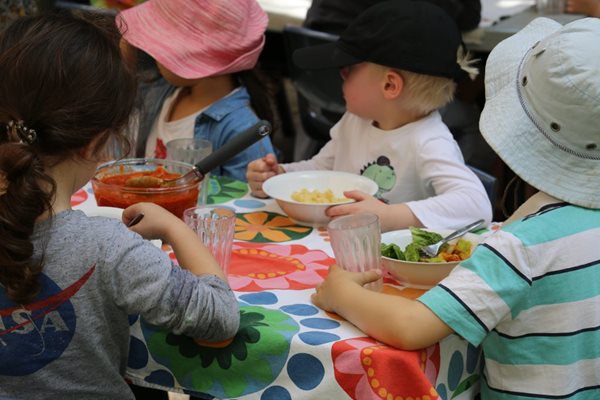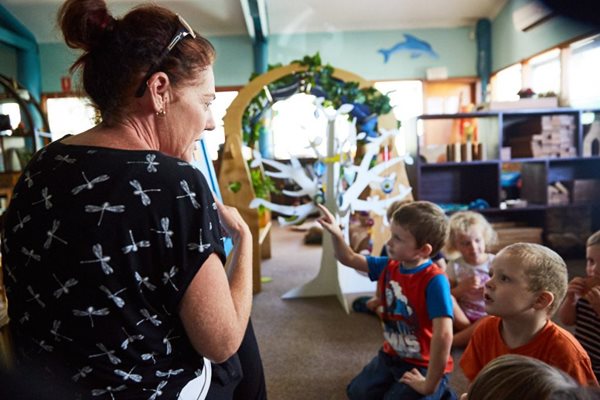The beginning of 2020 has brought much devastation across Australia. CELA CEO Michele Carnegie has seen first-hand the impact of widespread loss throughout communities on the south coast of NSW and heard stories of fear, near misses, courage and humanity.
“The fires have been fought by communities and it will be the strength of communities that will see people through to recovery,” says Ms Carnegie.
We know that many people are trying to get some order into their lives, or may still be in the midst of devastation. CELA is working with counsellor Jan Ryan from Relationship Australia to develop specific support mechanisms and resources for educators and children during this incredibly tough time. In this article and voice recording, NSW South Coast resident Jan offers guidance on how to understand and respond to trauma following a natural disaster. We hope that this may be of use to you when you are ready.
As someone who has worked with children all of my working life as a teacher and then a family and relationship counsellor, I understand that we all want the very best for the children in our care. As a resident of the fire affected NSW south coast I also understand what you are all experiencing at this time in our traumatised communities and the sense of loss and sadness seen in the faces of the residents here.
In order to provide safety and emotional support for others, we first need to pay close attention to looking after ourselves – just as we are told to put our own oxygen mask on before putting oxygen masks on others when travelling on a plane.
Self care in times of trauma
Firstly, we should spend some time ensuring that you are in the best possible mental and physical position to help the children in your care. Give yourself permission to care for yourself, knowing that it will help you to look after others.
Limit exposure
Limit your exposure to the daily replaying of traumatic events that are dished up to us every morning for breakfast. Look for some uplifting community stories to help you have hope things will get better.
Be self aware
Utilise your strengths and be aware of what you normally do to soothe yourself. The motion of swings, rocking chairs, hammocks and anything that has a rhythm and rocking motion can help adults and children to self soothe.
Reconnect to your body
Because we now know that trauma resides in the body and nervous system some of the current research encourages us to reconnect to our body awareness. This could involve doing activities such as yoga, dance, pilates, breathing and movement, which can make us aware of how our bodies are feeling.
Connect with your community
Stay connected to your local community and reach out to them for help. Staying connected to community and feeling supported and safe are good predictors of recovery and healing.
Give yourself permission for time out
Many who have suffered loss and trauma will come to your centre and will want to share stories. You may also have been impacted yourself, so do be aware of the impact this is having on you in terms of vicarious trauma or burnout. Be able to ask for what you need whether it’s a break, time out or self care and give yourself permission to stop.
Be informed
Take some time to pause and absorb some information about trauma. Psychiatrist Bessel van der Kolk is an innovator in treating the effects of overwhelming experiences, or trauma. Two podcasts featuring information from van der Kolk that may be of help are How Trauma Lodges in the Body and Trauma and Resilience Land in Our Bodies.
 Routines and structure offer hope for a brighter tomorrow
Routines and structure offer hope for a brighter tomorrow
Helping trauma affected children in our care
Now let’s look at some specific needs for young children who have experienced trauma. These suggestions are simple activities and ideas that you can employ RIGHT NOW in the immediate aftermath of these fires.
Maintain routines
Children will respond to structured environments with clear goals, timelines and structured activities, which make them feel safe. Routines and structure offer hope for a brighter tomorrow.
You can provide a place where children experience predictability in a very unpredictable time, and some relief from the drama that may be playing out at home. The children need to play and move their bodies and feel safe, which in turn engenders hope and facilitates healing.
Contain conversations which encourage fear
Be mindful of parents dropping children off who may be having fearful or graphic conversations within the child’s hearing. Model behaviour that moves the child out of earshot for such conversations.
Use your relaxation spaces and encourage mindful activities
Mindfulness is the state of being conscious or aware of something, or a mental state achieved by focusing awareness on the present moment while accepting feelings, thoughts and sensations.
Mindfulness can help with focus, the development of self-control and resilience, and boosting confidence.
Here are some simple mindfulness techniques that you can employ today:
- Ring a bell/gong while the children are silent and ask them to raise their hand when they can no longer hear the sound
- Ask the children to lie on their backs with a stone or other object on their chest and focus on watching it go up and down with each breath
Repeat this several times a day as research has indicated that even a few minutes a day can make a difference to a child’s state of mind.
Monitor symptoms over time
Observe any behaviours that are ongoing and are different from before the event. However, keep in mind that some children (especially boys) may act out on their feelings, which can lead to behaviour that may be challenging.
Try not to look for PTSD under every rock. Most people do not go on to suffer PTSD unless they are facing complex trauma from multiple events or abuse at the hands of people who should have protected them.
Name and acknowledge feelings
Help children to develop a language to describe their feelings by naming them. For example, say “That must have been very scary for you” or “You must have felt afraid when that happened.” This will also help to validate their feelings.
Avoid telling children to be brave and asking them not to cry.

Stories help us to make sense of what’s happening, process our experiences and offer hope that things will get better
Some helpful activities for trauma impacted children
Make a worry bag
Ask the children to find some stones, each stone represents a worry. Put the worries into the baq, tie it up and give it to an adult of your choice.
Designate a worry tree
Ask the children to name their worries and hang them on the tree.
Create a safety or worry hand
Ask the children to trace around their hand.
Let them write their worries on the fingers or ask them who or what makes them feel safe and write the names/words on each finger.
Facilitate indirect conversations
Focused play using sand, playdough, paint or drawing can help to facilitate indirect conversations rather than children having to speak directly about their situation.
Share helpful stories
When we suffer trauma we are unable to create meaningful narratives from the events and instead we keep replaying images over and over. Hence, stories for children (and ourselves) should have a beginning, a middle and end. They should help us to make sense of what’s happening, process our experiences and offer hope that things will get better.
Find some great books to share. A set of good stories relating to trauma are the Birdie Stories – particularly relevant is Birdie and the Fire. You can find them on the Natural Disaster Recovery website.
Other useful tips for your service:
- Make sure your service is known to agencies in your area so you can access the help available to you. You can also find a list of relevant organisations and contact numbers on the Service NSW website.
- Contact local support agencies who will have information that you can pass on to families.
- Don’t rush into making decisions, evaluate and take the time you need utilising the advice of people you trust.
- If you feel ready to explore further information on responding to trauma please refer to the Emerging Minds website, an ANU initiative which is a workforce development for supporting infants children and parents after traumatic events. Some of the material from this website was used in this article.
Thank you for reading. We hope you have found the information of use. You can also listen to this information in voice format here.
CELA will be in contact with you early next week regarding additional support available for early educators working in fire affected areas.
In the meantime, stay safe and know CELA is at the end of the phone to support members in any way possible.
After spending working in education, including roles as a preschool director, primary and high school teacher, Jan Ryan changed to a career in counselling. She has been working as a couples and family counsellor for 15 years. Jan has post grad qualifications in Systemic Therapy working with couples and families and has been trained in trauma informed practice, grief and loss counselling.
Relationships Australia is a leading provider of relationship support services for individuals, families and communities across Australia. They aim to support all people in Australia to achieve positive and respectful relationships. They are a community-based, not-for-profit Australian organisation with no religious affiliations. Services include counselling, family dispute resolution (mediation) and a range of family and community support and education programs.